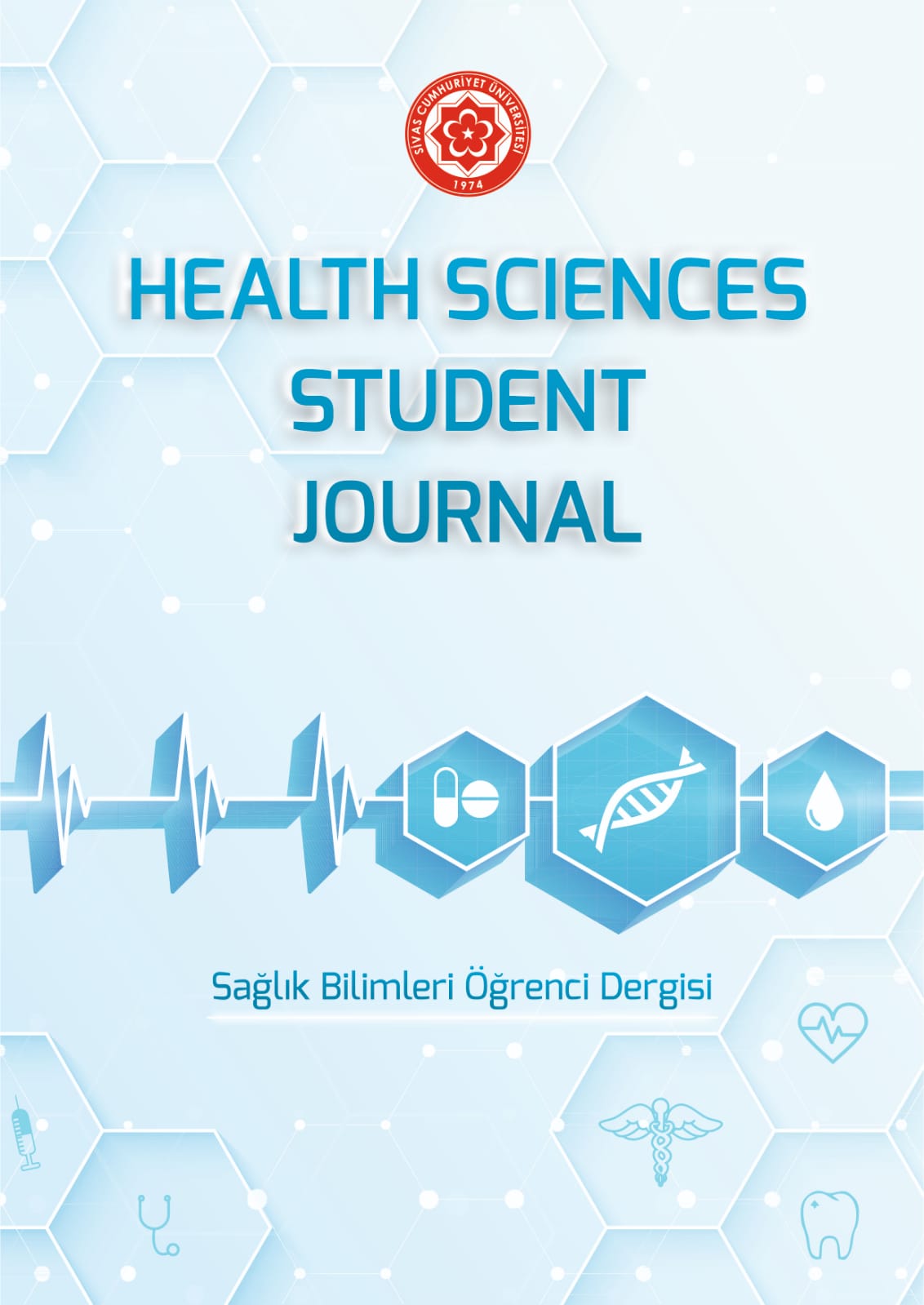![]()
Investigation of the Effect of Uridine on MCF-7 Breast Adenocarcinoma Cells
Yazarlar: Nefise TİLKİCİ1, Onur DURNA2,3, Feyza AKGÜL2,3
Corresponding author
1Nefise TİLKİCİ, Sivas Cumhuriyet Üniversitesi Tıp Fakültesi, Dönem 2, Sivas, Türkiye
E-mail: nnefisetilkici@gmail.com
Other authors
2Sivas Cumhuriyet Üniversitesi Tıp Fakültesi, Fizyoloji Anabilim Dalı, Sivas, Türkiye
3Sivas Cumhuriyet Üniversitesi Tıp Fakültesi Araştırma Merkezi (CÜTFAM), Sivas, Türkiye
ÖZET
Amaç: Diyet kanser gelişiminde çevresel faktörler içerisinde yer alır ve bu gelişimde rolü büyüktür. Bu çalışmanın amacı diyetle alınan üridinin MCF-7 Meme adenokarsinom hücreleri üzerindeki
antikanser etkisini araştırmaktır.
Yöntem: Üridin ve MCF-7 hücre kültüründe kontrol grubu ve ilaç grubu olmak üzere iki grup
planlanmıştır. Kontrol grubuna herhangi bir uygulama yapılmazken ilaç grubuna çeşitli
konsantrasyonlarda (100, 250, 500, 1000 μM) üridin 24 saat boyunca uygulanmıştır. XTT hücre
canlılığı testi ile üridinin hücre proliferasyonu üzerine etkisi belirlenmiştir.
Bulgular: Elde edilen XTT verilerine göre, çalıştığımız dozlardaki üridinin MCF-7 meme
adenokarsinom hücreleri üzerine hücre canlılığı açısından istatistiksel olarak anlamlı bir etkisi
bulunmamıştır (p>0.05).
Sonuçlar: Sonuçlar üridinin, MCF-7 hücre hattı üzerine antiproliferatif etkisinin olmadığını gösterdi.
Anahtar Kelimeler: Hücre canlılığı, Kanser, MCF-7 hücre hattı.
ABSTRACT
Objective: Diet is one of the environmental factors in the development of cancer and it has a great role in this development. Our aim is to investigate the dietary uridine on MCF-7 breast adenocarcinoma cells.
Method: In uridine and MCF-7 cell culture, 2 groups were planned as control group and drug group. While no application was made to the control group, various concentrations (100, 250, 500, 1000 μM) of uridine were applied to the drug group for 24 hours. The effect of uridine on cell proliferation was determined by XTT cell viability test.
Results: According to the XTT data obtained, uridine at the doses we studied did not have a statistically significant effect on MCF-7 breast adenocarcinoma cells in terms of cell viability (p>0.05).
Conclusions: Our results showed that uridine had no antiproliferative effect on the MCF-7 cell line.
Keywords: Cell viability, Cancer, MCF-7 cell line.
How to Cite (APA 7)
Tilkici, N., Durna O., Akgül F. (2022). Üridinin MCF-7 Meme Adenokarsinom Hücreleri Üzerine Etkisinin Araştırılması. Health Sciences Student Journal, 2(3), 59-62. uridinin-mcf-7-meme-adenokarsinom-hucreleri-uzerine-etkisinin-arastirilmasi
KAYNAKLAR
- Cooper, G. M., & Hausman, R. E. (2000). The development and causes of cancer. The cell: A molecular approach, 2, 719-728.
- Coşkun, A. (2011). Kanser Hücrelerinin Bağımsızlık İlanı Metastaz. Bilim ve Teknik, 120, 58-62
- Kozłowski, J., Kozłowska, A., & Kocki, J. (2015). Breast cancer metastasis-insight into selected molecular mechanisms of the phenomenon. Postepy Higieny i Medycyny Doswiadczalnej, 69.
- AÇIKGÖZ, A., & YILDIZ, E. A. (2017). Meme kanseri etiyolojisi ve risk faktörleri. Ergoterapi ve Rehabilitasyon Dergisi, 5(1), 45-56.
- Azizi, E., Shoeibi, S., Gabriele, L., G. & Oveisi, M.R. (2003). The inhibitory effects of ascorbic acid, αtocopherol, and sodium selenite on proliferation of breast cancer cell lines. Iranian Journal of Pharmaceutical Research, 173–177.
- Supuran, C.T., Casini, A. & Scozzafava, A. (2003). Protease inhibitors of the sulfonamidetype: Anticancer, antiinflammatory, and antiviral agents. Med Res Rev, 23, 535–558.
- Suzuki, M., Endo, M., Shinohara, F., Echigo, S. & Rikiishi, H. (2010). Differential apoptotic response of human cancer cells to organoselenium compounds. Cancer Chemother Pharmacol, 475–484.
- Lee, J. J., Beumer, J. H., & Chu, E. (2016). Therapeutic drug monitoring of 5-fluorouracil. Cancer chemotherapy and pharmacology, 78(3), 447-464.
- Connolly, G. P., & Duley, J. A. (1999). Uridine and its nucleotides: biological actions, therapeutic potentials. Trends in pharmacological sciences, 20(5), 218-225
- Peters, G. J., Kraal, I., & Pinedo, H. M. (1992). In vitro and in vivo studies on the combination of Brequinar sodium (DUP-785; NSC 368390) with 5-fluorouracil; effects of uridine. British journal of cancer, 65(2), 229-233.
- Yamamoto, T., Koyama, H., Kurajoh, M., Shoji, T., Tsutsumi, Z., & Moriwaki, Y. (2011). Biochemistry of uridine in plasma. Clinica Chimica Acta, 412(19-20), 1712-1724.
- Domingo, P., Torres-Torronteras, J., Pomar, V., Giralt, M., Domingo, J. C., Gutierrez, M. D. M., … & Marti, R. (2010). Uridine metabolism in HIV-1-infected patients: effect of infection, of antiretroviral therapy and of HIV-1/ART-associated lipodystrophy syndrome. PLoS One, 5(11), e13896.
